VR in 2016 a Bust, But Oculus' Wireless Headset Will Change Everything
The VR revolution didn't take off this year, but Oculus' wireless Santa Cruz prototype shows real promise.
I couldn't believe my eyes. I was Batman. I had his cowl. I had his toys, including a wicked Batarang I could throw. And I even had his face. I saw my scowl in a virtual mirror as I payed Batman: Arkham VR on the new PlayStation VR.
It was amazing, until I tripped over a wire.
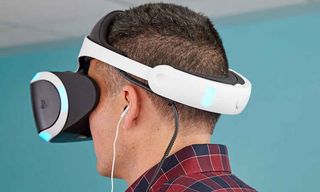
This was supposed to be a breakthrough year for VR, but despite some real technical triumphs from multiple companies, virtual reality remains a medium that's too still too geeky and burdensome for the masses.
As delightful as it was playing the Caped Crusader, I felt tethered and a little claustrophobic. For the PSVR, there's a long wire that runs to a control box which gets attached to the console. There's also a headphone jack on the wire that runs to your ears. And there's a separate camera you have to set up.
I don't see myself rearranging my living room for an optimal virtual reality experience.
Then there's the Move controllers, which I found difficult to operate by feel due to the multitude of buttons. The PlayStation VR headset itself felt comfortable but also kind of bulky.
MORE: PlayStation VR Review: Serious Fun for a Sane Price
Don't get me wrong. The payoff was a blast, but I don't see myself rearranging my living room for an optimal virtual reality experience.
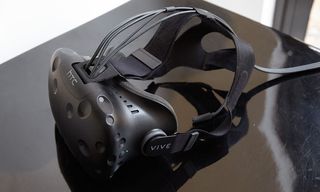
On the PC front, the HTC Vive provides a higher fidelity experience, and you can actually walk around virtual environments. But it has issues of its own, such as the need for two room-scanning base stations that you must install (ideally by mounting them on a wall). You also need to place your PC so that the cable attached to the headset will reach the play areas. HTC recommends that you cover any windows.
That's the trade-off for having 6.5 x 5 feet of play space. Did I mention the Vive is $799 and that a compatible PC costs about $1,400?
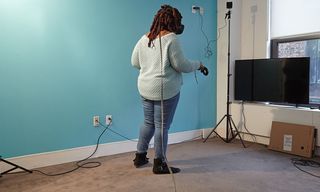
MORE: Best Gaming PCs
Facebook-owned Oculus is the VR giant, and it has primarily focused on desktop VR and mobile VR as two separate areas with the Rift and the Samsung Gear VR. The Rift is coming along nicely, as the motion Touch controllers are finally going on sale this December for $199. The bundle will include an extra camera sensor for tracking, and you can buy a third sensor for $79 if you want a Vive-like room-scaling experience.
But all of that is on top of the $599 for the headset and whatever you need to pay for a good VR-ready gaming desktop or laptop. And there's still the too many wires issue that keeps pulling you back to reality.
This is the holy grail for VR. Deliver a truly immersive experience anywhere without having to worry about tripping over wires or emptying your bank account.
The Gear VR is the closest thing yet to a mainstream VR experience. It's cheap at $99, and there are plenty of compelling games and experiences that don't even require a controller. When I played Land's End for the first time, for example, I felt like I was moving objects with my mind (it was my head) to solve puzzles.
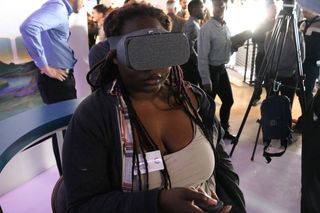
But even the partnership between Samsung and Oculus' hasn't yet yielded a killer app or broken through with a huge enough audience. Part of it the challenge is that you need a Samsung phone, an issue that Google is addressing with its Daydream platform. But it's not just that. The visuals just aren't as crisp or immersive as PC-based platforms. The PlayStation VR is somehwere in the middle in terms of quality.
MORE: PS4 vs. Xbox One: Which Console Is Right for You?
So is VR a fad? Not by a long shot. It's just evolving, and 2017 looks to be the year that it really takes off.
At the Oculus Connect conference this week, Facebook CEO Mark Zuckerberg revealed that the company is working on a standalone VR headset that will not require a phone. He demoed a virtual reality device that's more powerful than the typical mobile experience yet not tethered like the Rift, Vive and PSVR are. Apparently, it won't be expensive as the Rift, either.
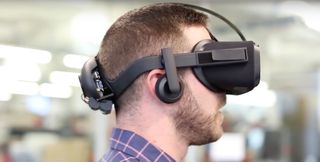
CNET tried out the wireless prototype, codenamed Santa Cruz, and deemed it nearly as good as the tethered experience.
This is the holy grail for VR. Deliver a truly immersive and high-fidelity experience anywhere without having to worry about tripping over wires, moving your coffee table, or emptying your bank account. But Oculus isn't the only company chasing this vision.
Intel has been working on its Project Alloy platform, which is also wireless, but adds the company's RealSense depth-sensing cameras to let you use your hands as controllers. And Qualcomm's Snapdragon VR820 puts the company's Snapdragon 820 mobile processor into a cordless VR headset. The aim is to help manufacturers who want to make their own all-in-own head-mounted VR displays.
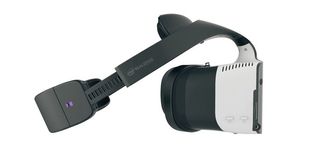
As 2016 started, Oculus Rift inventor Palmer Luckey told me that it was going to be a pivotal year for the category, but he was cautiously optimistic for a reason.
"It's not going to be the year that everyone gets interested in virtual reality, and I don't want people to get their hopes up too much on that," he told me.
He knew, as we all do now, that there are serious technical hurdles to overcome to deliver a best-of-both-worlds VR experience that marries the freedom of mobile with the high frame rates and graphics quality usually reserved for computers.
Facebook's Zuckerberg didn't say how much this VR wireless headset will cost or when it will ship, but it's what I'll be waiting for before I spend my own money to dive in. At that point, you won't be able to tear me away from my batsuit.
Sign up to get the BEST of Tom’s Guide direct to your inbox.
Upgrade your life with a daily dose of the biggest tech news, lifestyle hacks and our curated analysis. Be the first to know about cutting-edge gadgets and the hottest deals.
Mark Spoonauer is the global editor in chief of Tom's Guide and has covered technology for over 20 years. In addition to overseeing the direction of Tom's Guide, Mark specializes in covering all things mobile, having reviewed dozens of smartphones and other gadgets. He has spoken at key industry events and appears regularly on TV to discuss the latest trends, including Cheddar, Fox Business and other outlets. Mark was previously editor in chief of Laptop Mag, and his work has appeared in Wired, Popular Science and Inc. Follow him on Twitter at @mspoonauer.

